1. Order Kit & Scan Code
Congratulations! You’ve found your way to the free tutorials.
2. Get Ready To Crochet
Gather your supplies and find a cozy place to curl up and crochet.
3. Let's Get Stitching
Crochet along with our designer-led tutorial and handy tips below!
By holding four stands of Red Heart Super Saver yarn together and crocheting them as one, your throw will progress in record time! Great for beginners, the Red Heart Weekend Speedy Crochet Throw uses simple crochet stitches with a meditative pattern repeat that works up quickly to create a lush and cozy blanket. With 3 amazing yarn shade combinations to choose from, along with the hook and yarn needle included, this project will go from kit to complete in no time! Now that you have all your supplies at the ready, it’s time to walk through it step-by-step!
Pattern Tutorial
Follow along to learn how to crochet your own throw.
What You'll Need
- 3 balls each of Red Heart Super Saver yarn in Contrast A, B, C, and D (12 balls total)
- Size US P/16 (11.5 mm) Susan Bates crochet hook
- Susan Bates steel yarn needle
- Red Heart Weekend Speedy Crochet Throw printed tutorial
- If you’ve found your way to this tutorial but do not have the required materials, you can grab them here.
What You'll Learn
00:00Intro
00:56How to work with 4 strands together
3:25Gauge
4:05Crochet Chart
5:10Getting Started – Foundation Chain
5:30First Row with Double Crochet
6:50Second and Third rows, and keeping your edges even
9:26Fourth Row and ‘V’ Stitches
11:46Fifth and Sixth Rows
13:37Seventh Row
14:43Pattern Repeat
15:20How to join new yarn balls
17:09Edging/Border
22:52Weaving in your ends
Stitches & Handy Tips
Need a little extra help? The diagrams and videos below help break down each individual technique, so you can master your new-found crochet skills.
Slip Knot Crochet
-
Step 1
Make a circle with yarn or thread.
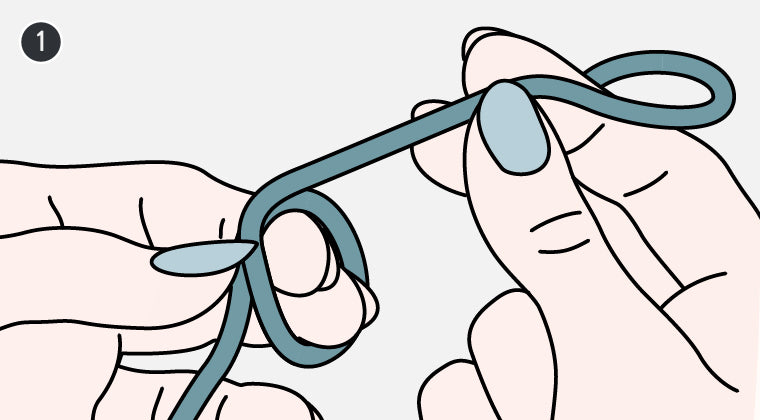
Step 2
Pull a loop through the circle.
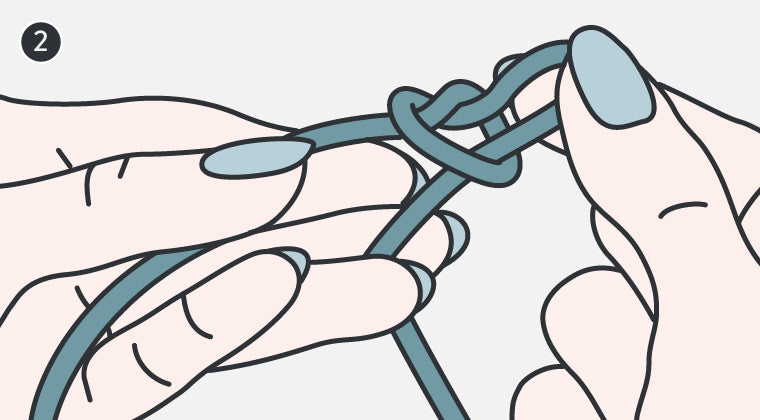
Step 3
Insert the hook in the loop.
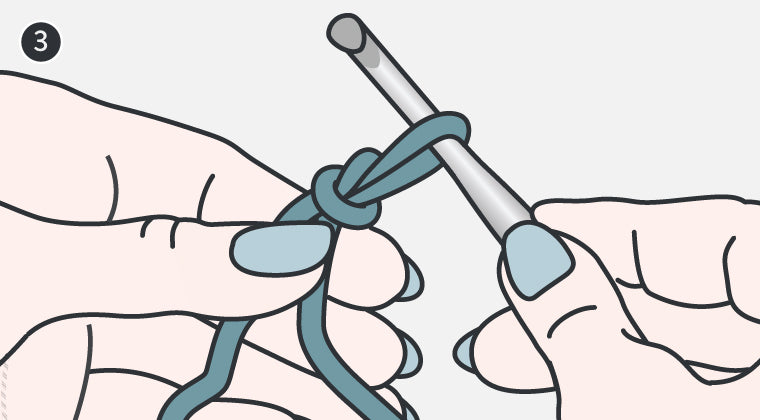
Step 4
Pull gently and evenly to tighten the loop and slide the knot up to the hook. You want the loop to be able to move easily on the hook but be snug around it. Take care that the loop stays on the wider part of the hook and is not on the thumb rest or the narrow part near the head.
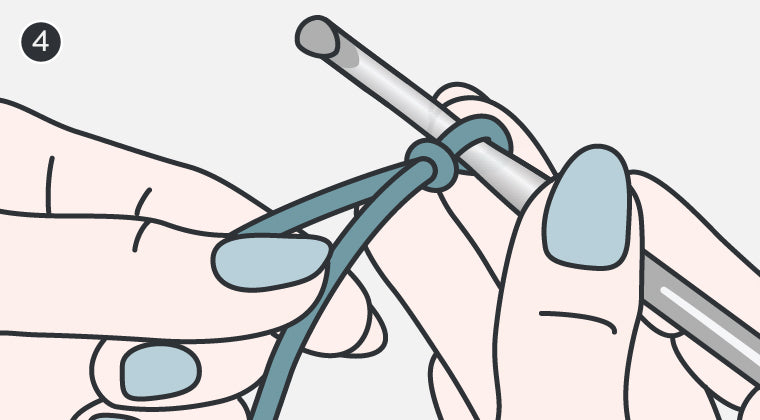
Chain
-
Almost all crochet begins with a foundation chain, which is a series of chain stitches beginning with a slip knot. You then work the first row of other stitches into the chain to start making crochet fabric. The foundation chain is also called a base chain or starting chain.
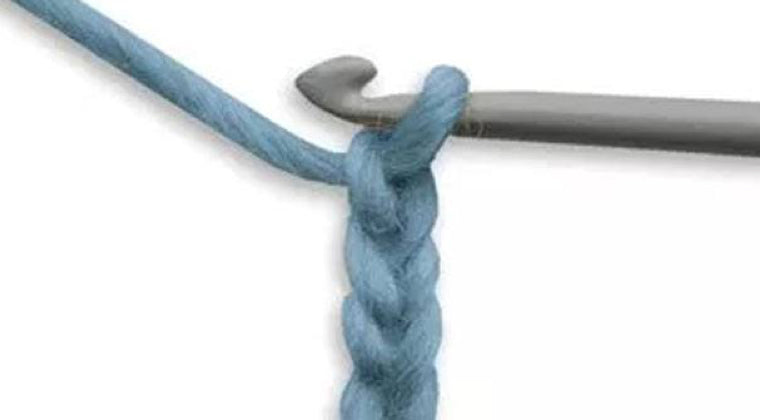
To work a foundation chain, start by making a slip knot.
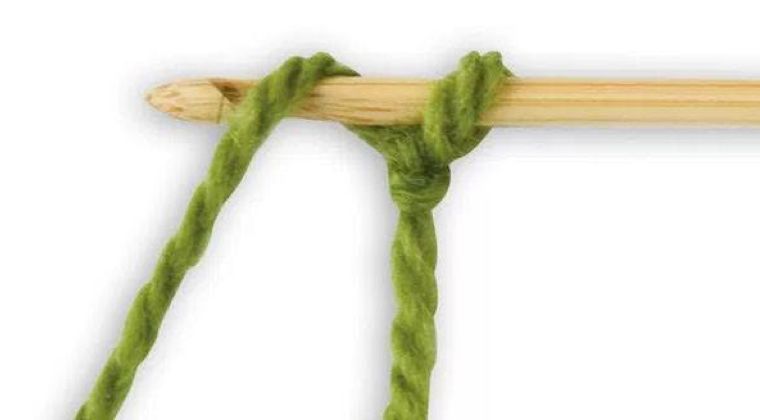
Then chain as many stitches as the pattern calls for.

Next, start working stitches into the chain. You can use double crochets, or any combination the pattern tells you to use.
When working into the starting chain, you may work under one or two strands of chain loops as shown in the illustration. Either of these methods forms an even, firm bottom edge.
Some people like to work into the "bump" on the back of the chain. This forms an even, stretchy bottom edge that is ideal for garments. It also produces an edge that looks more similar to the final edge of your project, making it useful for projects where both ends are exposed, such as scarves.
Whichever method of working into the foundation you choose, be consistent. Work all the pieces of a project in the same manner.
Single Crochet
-
Single crochet is the most common basic crochet stitch that will result in fabric. It is abbreviated sc.
Step 1
Insert the hook into the work (second chain from hook on the foundation chain,*yarn over and draw yarn through the work only.

Step 2
Yarn over again and pull the yarn through both loops on the hook.

Step 3
One single crochet made. Insert hook into next stitch; repeat from * in step 1.

Double Crochet
Step 1
Read more. Yarn over and insert the hook into the work (fourth chain from hook on starting chain).
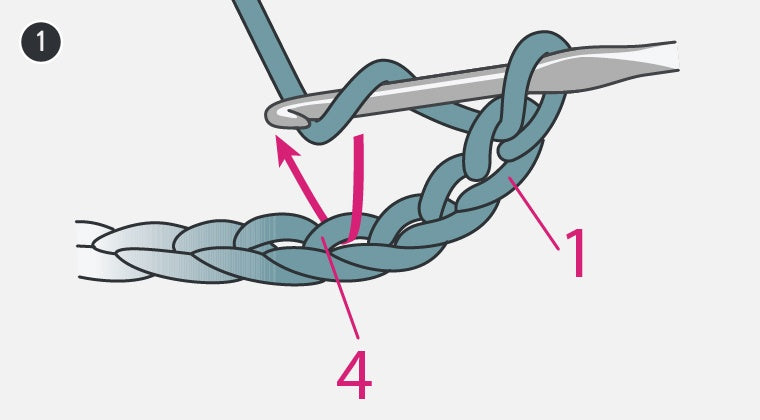
Step 2
* Yarn over and draw yarn through, pulling up a loop.
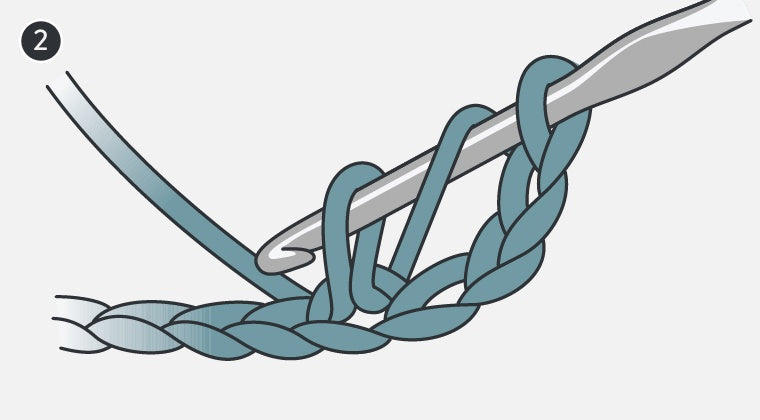
Step 3
Yarn over and pull yarn through only the first two loops on the hook.
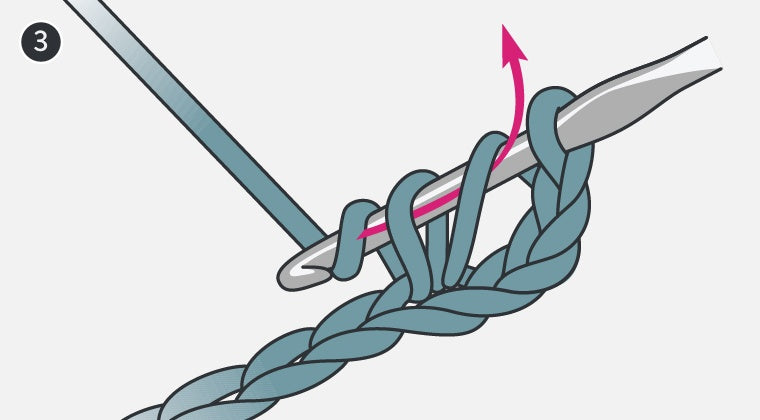
Step 4
Yarn over and pull yarn through the last two loops on the hook.

Step 5
One double crochet made. Yarn over, insert hook into next stitch; repeat from * in step 2.
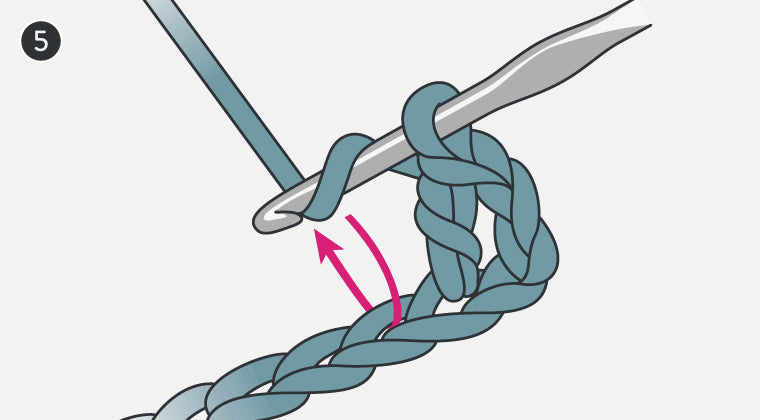
Fasten Off
-
To fasten off the yarn permanently, cut the yarn leaving an 8" end (longer if you need to sew pieces together). Pull the end of the yarn through the loop on the hook and pull gently to tighten.

Weave Ends Crochet
-
Weave in ends securely before blocking pieces or sewing seams. Securely woven ends will not come loose with wear or washing. It's best to work in ends as invisibly as possible.
There are multiple options for yarn needles to use to weave in your ends: straight steel, straight plastic, and bent-tip steel. Use whichever one you prefer.
A good method of weaving in ends is to run the end under several stitches, then reverse the direction and weave it back under several more stitches. Trim the end close to the work. Changing the directions keeps the yarn more secure. Leave at least 4" on the end to weave in securely. If you only weave the end under a couple of stitches it will not be secure. If your yarn is quite thick, you may want to leave extra length.
Depending on the pattern, you may be able to start the process of weaving in your ends by laying the end along your fabric and working stitches around it as you go. This method is not a substitute for traditional weaving-in ends, as you will still need to reverse the direction, but it may begin the process. This method may not work as well when you are changing colors, as depending on the stitch pattern the tail of the old color may show through the stitches of the new color.
If you are working with multiple colors, for example in a striped pattern, keep the ends in the same color as you weave them in. Keeping them in their own color makes them more difficult to see.
If you are not sure if the end will be visible on your fabric when you weave it in, use a yarn needle that is a different color from your fabric. Thread the yarn needle through the stitches, but then check the opposite side before you pull the yarn through. If the yarn needle is extremely exposed, your tail will be as well.
If your tail is too short to weave in with a regular needle or too thick to fit into the eye, use a Susan Bates Finishing Needle. Finishing Needles have the eye all the way along the length of the needle, so it's easier to weave in short or extra-thick tails.
